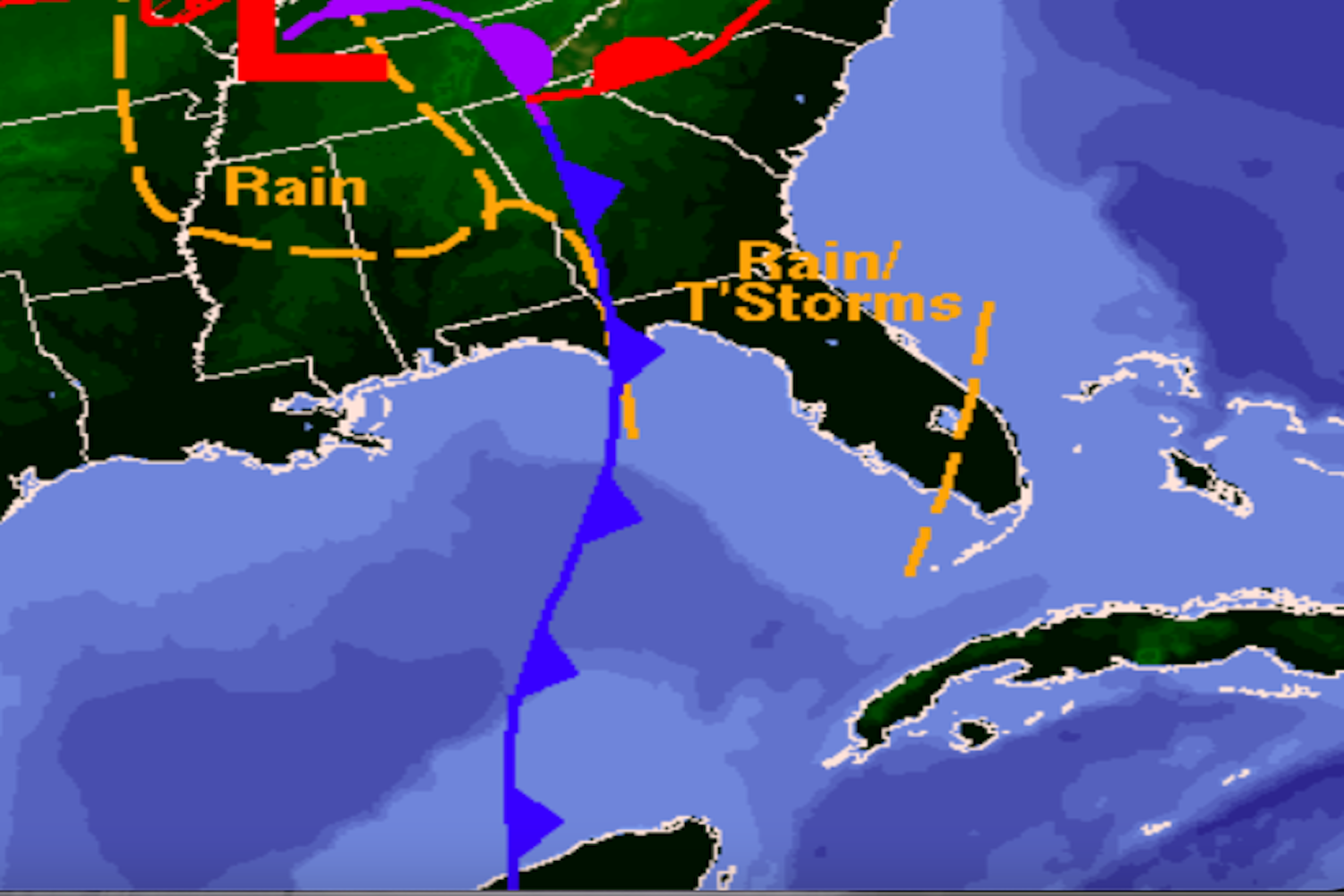Florida experiences cold front
March 23, 2023
Right now throughout the world there is a cold front happening, which is unexpected because it is late March. However, the lower temperatures will not remain long. The warmer air mass interacts with the cooler air mass at the boundary, resulting in precipitation. A warm front or squall line is frequently followed by a cold front.
Following a series of storms that sent many tornado warnings and watches across the Panhandle and North Florida, cooler temps have arrived. A cold front provides severe weather at first, but subsequently it offers clear skies with cumulus clouds, good visibility, and low humidity. Cold fronts move faster than warm fronts and often move east to west, northwest to southeast, or north to south. They can, however, infrequently travel from southwest to northeast or northeast to southwest.
The Florida cold accompanies other bouts of surprising weather patterns throughout North and South America. For instance, in February, southern California experienced extremely cold temperatures and large amounts of precipitation. This resulted in a blizzard warning throughout the region, including in the Los Angeles area. It also inhibited travel throughout the area, as many roads were closed or blocked off due to rain and snow.
Other areas of the world have experienced the opposite of cold fronts, with extremely high temperatures being recorded. The unrelenting and record-breaking heat persisted throughout February in portions of South America. Temperatures in Chile, Argentina, and Paraguay are expected to reach the mid-to-high 30s Celsius, with maximum temperatures reaching 40C in northern Argentina. These temperatures are at least 5-10 degrees Celsius above the climatological average.

Beyond their immediate effects, cold weather can have unexpected consequences as well and affect other weather patterns. For example, cold fronts are often accompanied by changes in pressure and wind.. As a cold front approaches, atmospheric pressure will progressively decline, then rise once the front has passed. Winds are frequently strong both before and behind a cold front, with the strongest winds occurring within a few hours of the frontal passage. Winds can stay strong for up to 24 hours after a front passes due to temperature and pressure variations that occur over a short geographical difference when a cold front sweeps through. This played a role in the tornado warnings in northern Florida earlier in the month.

